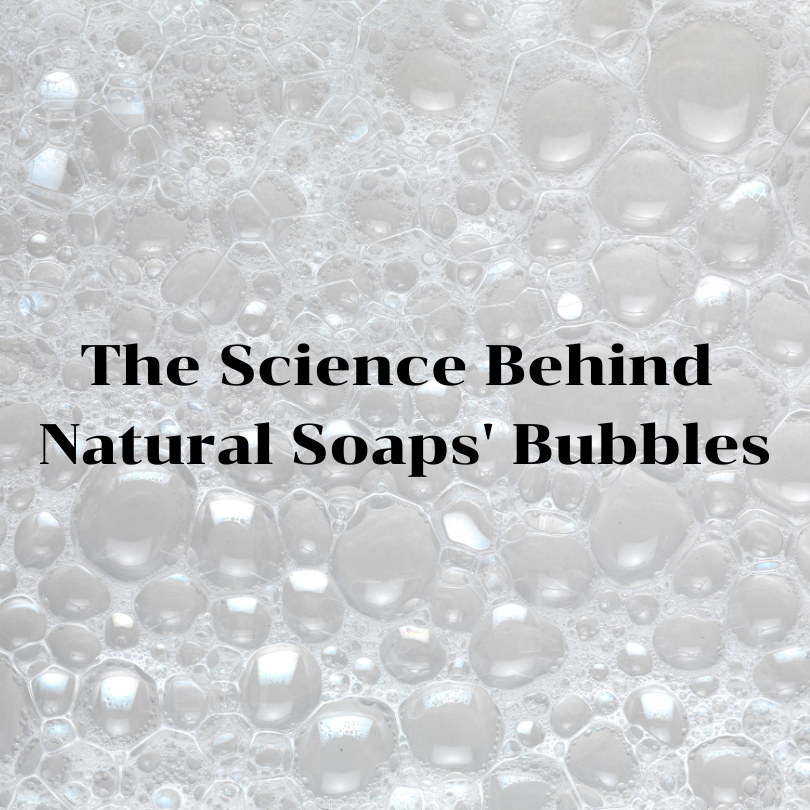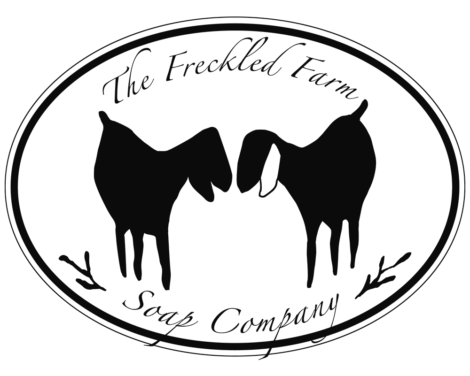
Have you ever wondered what creates the lather in our goat milk soaps and other natural soaps? In most commercial soaps lather is created with sulfates, but most handmade, natural soaps don’t include this, as it can be harsh on sensitive skin. So how do we naturally create bubbles? Let’s dive into the science behind what makes natural soaps lather and why they are a preferred choice for many seeking a gentle and eco-friendly cleansing experience.
- Surfactants: The Key to Lather
The primary ingredient responsible for lather in natural soaps is a surfactant. Short for “surface-active agent,” a surfactant is a compound that reduces the surface tension of water. When combined with water and agitation, such as rubbing the soap between our hands, surfactants create bubbles and foam.
Natural soaps contain gentle surfactants derived from plant-based oils or fats, such as coconut oil, olive oil, or palm oil. These surfactants are biodegradable and more environmentally friendly than synthetic ones found in commercial soaps.
- Saponification: The Magical Transformation
The process that turns oils or fats into soap is known as saponification. During saponification, the triglycerides present in oils or fats react with an alkaline substance (such as lye, sodium hydroxide, or potassium hydroxide) to form soap molecules and glycerin.
This reaction breaks down the oils into their component parts, including glycerin and fatty acid chains. The resulting soap molecules have a hydrophilic (water-attracting) head and a hydrophobic (water-repelling) tail. When you wash your hands with soap and water, these soap molecules surround and trap dirt, bacteria, and oil, allowing them to be easily washed away with water.
- Micelles: The Bubble Builders
Once soap molecules form in the water, they arrange themselves into structures called micelles. Micelles are tiny clusters with their hydrophilic heads facing outward and their hydrophobic tails facing inward, creating a shield-like structure.
When you agitate the soap solution (by rubbing your hands together, for example), the micelles are dispersed and trap air, forming the bubbles that we associate with lather.
- The Role of Glycerin
In natural soaps, glycerin is a valuable byproduct of saponification. Glycerin is a humectant, meaning it attracts moisture to the skin. Unlike commercial soaps that often remove glycerin to be used in other skincare products, natural soaps retain this moisturizing component, contributing to their skin-nourishing properties.
The captivating lather in natural soaps is the result of a delicate chemical dance between water (or milk in our case), oils or fats, and the process of saponification. As you enjoy the luxurious bubbles that cleanse and refresh your skin, you can also revel in the knowledge that natural soaps are gentle, eco-friendly, and crafted with care to preserve the skin-loving properties of the ingredients.
Next time you reach for a natural soap, take a moment to appreciate the fascinating science behind the bubbles, and rest assured that you are making a mindful choice for your skin and the environment.
